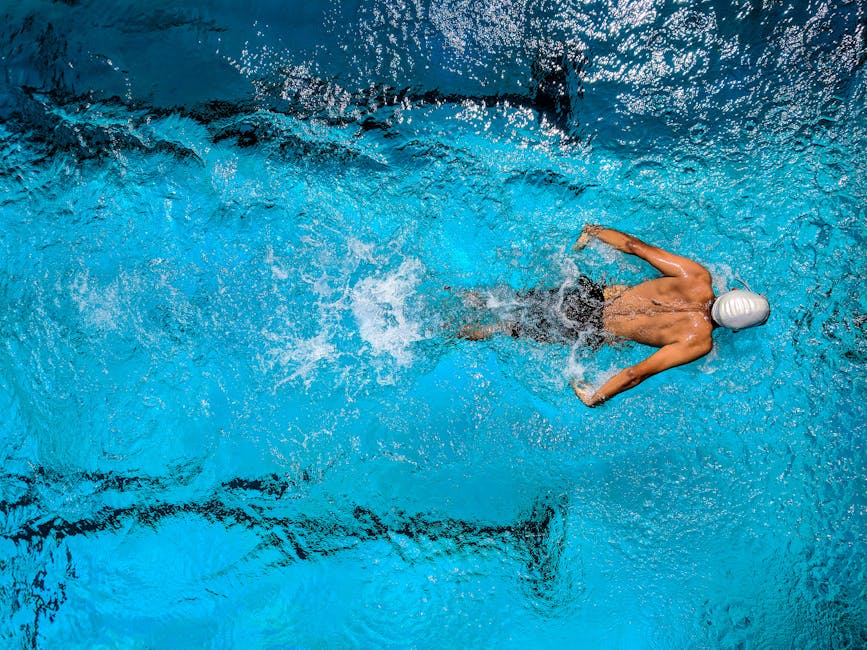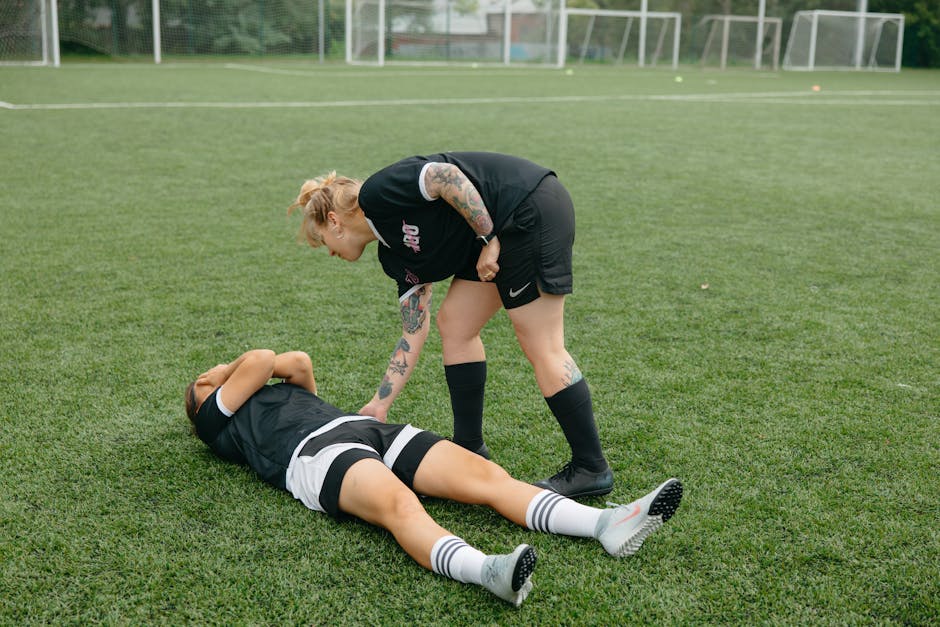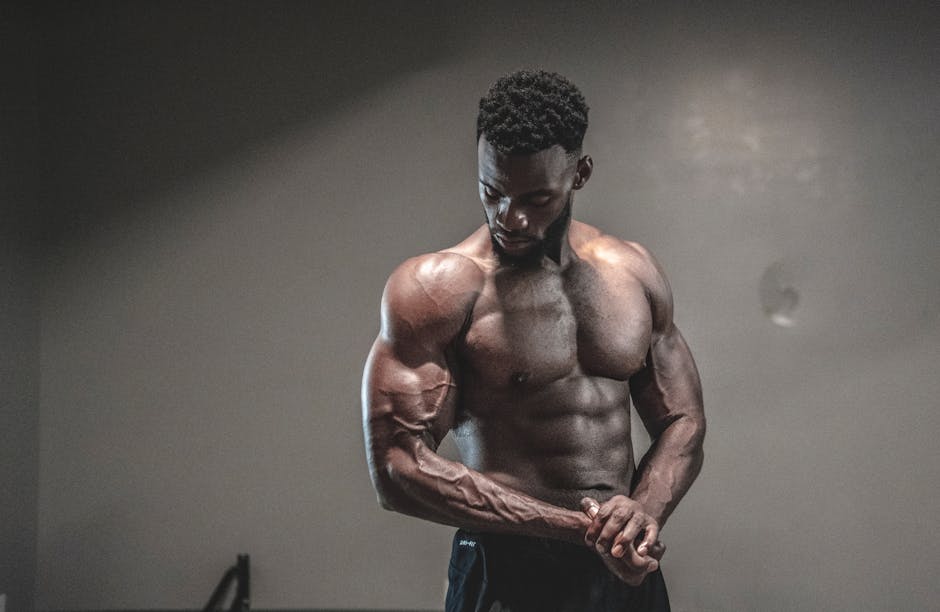Why Pre-Game Workouts Matter
Before stepping into competition, what happens in the minutes—or even hours—before game time can make or break your performance. Pre-game workouts are about more than just warming up; they are strategic, targeted routines that prepare both body and mind.
Injury Prevention Starts Here
Warming up properly is one of the simplest ways to avoid painful and sometimes season-ending injuries. By gradually increasing your heart rate and prepping joints, you’re signaling to your body that it’s time to move—safely.
- Activates muscles before intense use
- Increases joint lubrication and blood flow
- Reduces chances of strains, pulls, and tears
Move With Purpose, Perform With Power
A pre-game workout isn’t random—it’s built with intention. Every movement primes key systems, from muscular strength to neuromuscular coordination, helping you perform at your peak the moment the game begins.
- Tailored warm-ups drive sport-specific readiness
- Supports optimal speed, agility, and power
- Enhances timing, rhythm, and reaction
Prime Your Mind for Competition
Physical readiness sets the stage, but mental clarity seals the deal. Pre-game routines help athletes lock in before the first whistle.
- Builds confidence through controlled preparation
- Eases nerves by creating ritual and rhythm
- Signals your body: “It’s go time”
Whether you’re hitting the field, court, or track, warming up with intentional focus prepares you to compete instinctively—fully present and fully prepared.
Phase 1: Wake-Up & Warm-Up
Starting your pre-game workout with intention sets the tone for your performance. This first phase isn’t just about getting the blood pumping—it’s about priming your body to move efficiently and safely.
Why Dynamic Beats Static
Static stretching might feel good, but before competition, it can actually reduce power and explosiveness. Instead, dynamic movements actively engage your muscles and increase your body temperature.
Key Benefits of Dynamic Stretching:
- Warms up muscles through motion
- Prepares joints and connective tissue for sport-specific demands
- Enhances neuromuscular efficiency without decreasing force output
Activate Major Muscle Groups
Focus on movements that target the areas most involved in your sport. The goal here is full-body readiness:
- Hip Mobility: Helps with stride length, change of direction, and stability
- Shoulder Rotation: Crucial for throwing, swimming, or overhead motion sports
- Core Activation: Stabilizes movement and assists with explosive motions
Sample Wake-Up Flow
Incorporate a sequence of simple, effective exercises. Keep the flow light and rhythmic rather than intense.
Example Routine:
- Jumping Jacks (30 seconds): Full-body warm-up
- Leg Swings (10–15 reps per leg): Targets hips and hamstrings
- Arm Circles (15 forward, 15 backward): Loosens shoulders and upper back
- Bodyweight Squats (10–15 reps): Activates glutes, quads, and core
This 5–7 minute flow transitions the body from rest to readiness, setting the stage for more sport-specific movement in the next phase.
Phase 2: Sport-Specific Priming
Once your body is warm and awake, it’s time to dial-in movements that directly translate to your sport. This phase bridges general mobility with targeted performance.
Mirror Your Movements
The goal here is to mimic the motions and demands of your actual competition.
- Are you a basketball player? Work in lateral shuffles and change-of-direction footwork.
- Competing in soccer? Add in ball taps, quick passes, and explosive cuts.
- Getting ready for tennis? Incorporate short court sprints and forehand/backhand shadow drills.
Your body should begin to “remember” how it needs to move under game-time pressure.
Build Neural Readiness
Priming your nervous system is just as important as warming up your muscles. You want to feel coordinated, alert, and snappy.
Best drills to sharpen reflexes and reactivity:
- Agility ladder drills: quick and controlled foot patterns
- Short sprints (10–15 yards): ideal for explosiveness off the mark
- Cone drills: work reaction time with split-second movement changes
Adjust by Sport and Role
No two sports—or positions—have the same physical demands. Tailor your movements accordingly:
- High-intensity, power-based sports: keep movements fast and crisp, focus on short bursts
- Endurance or field sports: incorporate controlled acceleration and deceleration cycles
- Team sports: emphasize coordination and timing drills (e.g., passing rhythms, communication cues)
This is a fine-tuning phase. The goal isn’t fatigue—it’s precision and priming. Your body should feel alert, not worn down.
Phase 3: Strength & Power Activation
This phase isn’t about crushing weight—it’s about sending the right signals. Fast-twitch muscle fibers are your power players. Activating them pre-game means you’re not walking in cold when it’s time to explode, sprint, or strike.
The key: light resistance, sharp intent. Think medicine ball slams, banded jumps, or explosive push-ups. Movements should be big, quick, and controlled. Skip the grind. This isn’t a workout; it’s a wake-up call for your nervous system.
Keep reps low—just 2 to 5 per set. Rest in between. The goal is quality and precise activation, not fatigue. You’re firing up the engine, not redlining it.
Phase 4: Mobility & Joint Preparation
Preparing your joints before competition isn’t just a good idea—it’s a critical component of performance and injury prevention. This phase targets the areas most responsible for movement efficiency and impact absorption during gameplay.
Focus Areas: High-Use Joints
When it comes to joint prep, some areas demand consistent attention:
- Ankles – Crucial for balance, directional changes, and explosive starts
- Knees – Absorb landing forces and support cutting motions
- Hips – Control stride length, rotation, and power transfer
- Shoulders – Essential for throwing, swimming, swinging, or tackling, depending on your sport
The Mobility Approach: Go Slow, Get Strong
Fast movements come from flexible, controlled joints. The goal here isn’t to stretch to your limits, but to gently expand your usable range of motion under control.
Sample mobility exercises:
- Ankle circles with band resistance
- Deep hip openers like 90/90 transitions
- Controlled knee flexion with wall support
- Shoulder pass-throughs with a mobility stick or band
Guidelines:
- Move slowly and with purpose—no rushing
- Use breath to assist longer holds (around 30 seconds to a minute)
- Focus on areas that feel tight or sluggish, without forcing the range
Why It Matters: Injury Prevention & Performance
Integrating mobility into your pre-game routine helps to:
- Reduce the likelihood of early-game muscle cramps or joint strain
- Activate stabilizing muscles around major joints
- Promote smoother, more efficient movement patterns
Think of it as tuning your instrument before hitting the stage. Flexible, prepared joints result in more control and confidence from the first play onward.
Phase 5: Short Recovery Window
After activating your body through dynamic warm-ups and priming drills, it’s important to shift into a short yet crucial recovery period. This brief window sets the stage for optimal performance by balancing physical readiness with mental clarity.
Why It Matters
- Helps prevent overstimulation right before competition
- Reinforces the mind-body connection
- Promotes a calm, focused pre-performance mindset
What This Phase Looks Like
Duration: 5–10 minutes
Instead of jumping straight from high-energy movement into gameplay, use this window to modulate your nervous system and regroup.
Key elements to include:
- Light hydration – Replenish fluids lost during warm-up without overloading the stomach
- Intentional breathing – Controlled, diaphragmatic breaths to reduce heart rate and return to baseline
- Mental reset – Reflect briefly on your game plan or visualize that first play
Creating the Transition
The goal here is clarity, not complete rest. You’re not cooling down—you’re refining your readiness.
Try this recovery flow:
- 2–3 minutes seated or standing, focusing on slow inhales and exhales
- A few gentle mobility reps or walk-around pacing to stay loose
- Last-second reminders or affirmations to reinforce focus
This deliberate break bridges intense preparation with peak performance. Don’t skip it.
Mental Activation (Often Skipped)
Just like your muscles, your focus needs a warm-up too. Mental activation doesn’t need to be mystical—it’s practical, fast, and proven to make a difference on game day.
Start with a short visualization. Close your eyes for 60 to 90 seconds. Picture your first move, your first three minutes, the feel of contact or speed. See it, but more importantly, feel it. Body awareness sharpens with intent.
Next: breathing. Not deep yoga breaths. Just in through the nose for four counts, out through the mouth for four. Keep it simple, calm, and even. Do this for a few cycles to settle your nervous system and dial in.
Then move. Connect breath to light movement—hip openers, shoulder rolls, or balance drills. This ties mind and body together, grounding your presence and cutting through the fog.
The goal isn’t to pump yourself up to the ceiling. It’s to center—to be present, clear, and ready to execute.
For more detailed techniques, check out Mental Fitness Techniques for Staying Focused.
Mistakes to Avoid
Let’s get this straight: your pre-game routine is supposed to prime you, not drain the tank.
First mistake? Overtraining before the event. This isn’t the time to prove how hard you can go. Crushing a hardcore session hours before kickoff doesn’t build readiness—it builds fatigue. You’re not trying to get stronger. You’re trying to feel sharp, springy, and mentally locked in. Keep the warm-up just that: warm.
Second, avoid the classic trap of static stretching cold muscles. Stretching like this before you’ve moved can actually tighten you up and make you more prone to strains. Dynamic warm-ups are the move—get the blood flowing first, then loosen up on the fly. Save the long static holds for post-game recovery.
Lastly, too many athletes burn through a warm-up only to forget to fuel. I’m talking water, electrolytes, maybe a light carb if there’s time. Skipping this stuff leaves you flat before you even begin. Hydration and smart fueling aren’t extras—they’re non-negotiable if you want full output.
These details might seem small, but come game time, they show up big. Prep smart, or prepare to feel it when it counts.
Wrap-Up: Train Intentionally, Perform Instinctively
Pre-game routines aren’t just a box to check—they’re the gateway to showing up sharp and staying ready. Too many athletes treat warm-ups like background noise, when in reality, it’s the difference between surviving and dominating.
Find what works for your body. Build it into a system. Stick to it. Whether you’re a high jumper or a point guard, your prep should align with how you move, where you need speed, and what your game demands.
And don’t coast through it. Warm-ups aren’t passive—they’re a launch sequence. Get your heart rate up, spark your brain, fire up your mechanics. This is your time to prime the engine. Come game time, you shouldn’t be waking up—you should already be rolling.




